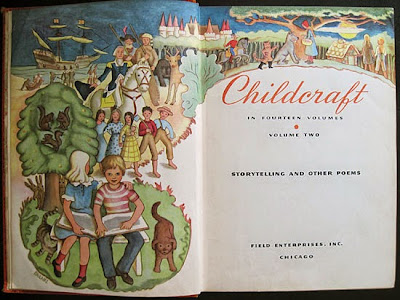Lately I've been immersed in early twentieth century Japanese design history and artists. After a look at
World War II textiles, via this
book, I wanted to check out
this title. Some of the same writers contributed to both books, and my latest read,
The Brittle Decade, is a fascinating look at Japanese visual culture of the 1930s.
Elsewhere in my image browsing binge, I saw this earlier work—
 |
| Poster by Tsunetomi Kitano (1911) |
Toward the top right, and just below "Kobe," the city's symbol appears on a flag seen above a flag of Japan.
This Art Nouveau beauty of a poster, publicizing a long-ago exposition at Kobe's port, reminded me of a later event there...
Other side—
"
November 28 -30, 1984"
The dates should prove this event was indeed real, even though I didn't see it with my own eyes. Instead, I got the button at a Kobe trade fair I did attend, in exchange for a day's pay as an exotic foreign greeter. Compared to Meatpia, that event had a prosaic name, yet its products and atmosphere were a very odd mélange (and a story for some other time...)
Despite all alarming appearances, Japan Meatpia was (presumably) held to promote Kobe beef and other domestic products. A koala shows up here only because a vogue for the animal's image meant it was being used for every possible product or ad. And, one must always remember:
there is no cognitive dissonance in Japanese marketing.
I like the button's use of a photo with red eye, which coordinates nicely with the 3-dimensional shadowed font.
The fair's name can also be explained, if in more than a few words. For starters,
pia derives from
utopia, and it's a routine display of Japan's love for creating odd neologisms from elements of English. Japanese automatically add an "o" between the two English consonants, when reading or saying this. Japanese syllable stress is mostly even, but pronunciation here is roughly,
me-to-pía
Adding
pia to names was also a marketing thing. I believe that was strongest in the Kobe area, and prompted by this—
Images are from the nice collection of post cards and fair info
here. Portopia opened March, 20 1981. Sponsored mainly by domestic corporations, it showcased current high tech to predict how Japanese would live in the future. The
New York Times deemed the fair's site, Port Island, "perhaps the most impressive exhibit of all"—
The island is the result of a 15-year land reclamation project sponsored by the city government of Kobe, Japan's second busiest port. Nearly three billion cubic feet of earth were transported from hills near the city to the site in the harbor by a large conveyor belt and were poured into an area enclosed by a concrete breakwater. The result is an island about eight miles long, with housing and recreational and health facilities for a population of 20,000.
The fair certainly had its earnest side—
A third of the pavilions focus on energy or environmental issues, reflecting Japan's concern over its acute shortage of energy resources - the country must import more than 85 percent of its energy needs. The Sanyo Solarium, for example, is heated and air conditioned with solar panels, while a pavilion sponsored by the Kansai Power Company is devoted entirely to examining alternative energy sources. In one pavilion a fuel extracted from coral and the leaves of eucalyptus trees was used to operate a small motorcycle.
Several of the more spectacular pavilions highlight Japan's expertise in information technology. The Theme Pavilion, the centerpiece, houses the newly developed Hiovics, which stands for highly interactive optical visual information system, and an audience-participation video system. Visitors to the pavilion sit at individual computer booths from where their faces are projected onto a screen and their answers to a poll on Japanese ways of life are simultaneously tabulated.
At half-hour intervals, visitors are quizzed about their preferences in studying, eating and leisure activities. Based on their answers, the computer compiles a vision of the future that the respondents say they prefer. The results indicate that the Japanese want more time for sports and recreation.
The Times noted such futuristic wonders as "computers that compose music, dancing robots and hemispheric screens that project dazzling optical illusions." It was the largest high tech exposition since
Osaka Expo '70.
Portopia lacked the international participation of 1970, being, as the Times said, "sponsored by the Japanese for the Japanese." Presentations combined technology, entertainment, and—what else?—
pia—
"Internationalism," Japanese-style, made appearances. Exotic and futuristic—
Exotic and quaint—
Another kind of exotic and foreign—
1981: Panda not yet eclipsed by the
korara boomu ("koala boom"), or the mid-80s flirtation with
erimaki tokage.
Seventy years earlier: a glimpse of the port, as seen between the Art Nouveau draperies—
In 1981 a Kobe Port Island Exhibition Association's
brochure estimated a Port Island "daytime population of about 70,000 in 1985." Over two decades later—
Before Portopia's opening, an automated train system linking Downtown Kobe with Port Island was built. Along with the event's ultimate legacy of convention centers, hotels and an airport, the island was developed as a bedroom community of high-rise condos and suburban amenities.
Speaking of landfill... I occasionally visited friends who lived in one of those condos, the only times I went to Port Island. More often, some of my work commutes passed a development in the next town to the east. While it was much smaller and less glitzy than the Kobe site, it did have some rather surreal apartments rising from waterfront landfill. I've located only these small photos, and they don't quite capture how odd "Ashiya Newtown" looked—
Those are part of
this interesting photo grouping.

































































